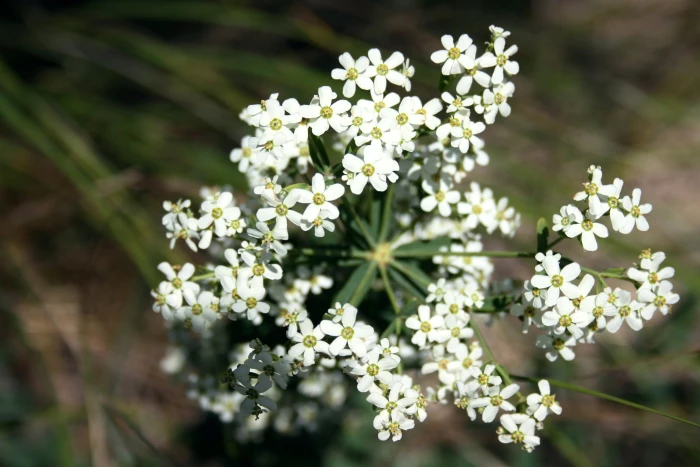Flowering Spurge
(Euphorbia corollata)
Flowering Spurge (Euphorbia corollata)
/
/

Cody Hough
CC BY-SA 3.0
Image By:
Cody Hough
Recorded By:
Copyright:
CC BY-SA 3.0
Copyright Notice:
Photo by: Cody Hough | License Type: CC BY-SA 3.0 | License URL: https://creativecommons.org/licenses/by-sa/3.0 | Uploader: IvanTortuga | Publisher: Wikimedia Commons | Title: Lake_Plant_2.JPG | Notes: User created page with UploadWizard |



















































Estimated Native Range
Climate Requirements for Chester, Pennsylvania
| This Plant | Your Site | Plant Suitability for Your Location | ||
|---|---|---|---|---|
| • Precipitation | 18" - 83" | 45" | Aquatic | Aquatic |
| • High Temp. | 64°F - 96°F | 86°F | Your summer temperatures are normal for this plant. | Excellent |
| • Low Temp. | -14°F - 48°F | 24°F | Your winter temperatures are normal for this plant | Excellent |
This plant may not grow well at your location - your precipitation is too high.
Summary
Euphorbia corollata, commonly known as Flowering Spurge, is a deciduous perennial herb native to open woodlands, prairies, and meadows in the Eastern and Central United States. It typically grows up to 1 meter (3 feet) tall, featuring smooth stems and light green leaves that are arranged alternately or in whorls. The plant’s distinctive flowers, which bloom from June to September, are small at about 6 mm (1/4 inch) across and consist of one pistillate (female) and several staminate (male) flowers surrounded by five showy white bracts. These bracts are often mistaken for petals but are actually modified leaves known as an involucre. The Flowering Spurge’s bloom period adds extended interest to garden settings during the summer and fall months.
Flowering Spurge is valued for its drought tolerance, low maintenance, and the delicate, airy appearance of its blooms. It is often used in naturalistic plantings, wildflower gardens, and as a filler in borders due to its adaptability to various soil types, provided they are well-drained. This plant thrives in full sun but can tolerate part shade, requiring very low to low amounts of water once established. It is also known for its deep taproot, which contributes to its drought resistance but makes it difficult to transplant. Gardeners should be cautious, as the sap of Euphorbia species can be irritating to the skin and eyes.CC BY-SA 4.0
Flowering Spurge is valued for its drought tolerance, low maintenance, and the delicate, airy appearance of its blooms. It is often used in naturalistic plantings, wildflower gardens, and as a filler in borders due to its adaptability to various soil types, provided they are well-drained. This plant thrives in full sun but can tolerate part shade, requiring very low to low amounts of water once established. It is also known for its deep taproot, which contributes to its drought resistance but makes it difficult to transplant. Gardeners should be cautious, as the sap of Euphorbia species can be irritating to the skin and eyes.CC BY-SA 4.0
Plant Description
- Plant Type: Herb
- Height: 2-3 feet
- Width: 2-3 feet
- Growth Rate: Moderate
- Flower Color: White
- Flowering Season: Summer, Fall
- Leaf Retention: Deciduous
Growth Requirements
- Sun: Full Sun, Part Shade
- Water: Low
- Drainage: Medium
Common Uses
Bank Stabilization, Bee Garden, Bird Garden, Border Plant, Butterfly Garden, Deer Resistant, Drought Tolerant, Groundcover, Low Maintenance, Rabbit Resistant, Rock Garden, Showy Flowers, Street Planting
Natural Habitat
native to open woodlands, prairies, and meadows in the Eastern and Central United States
Other Names
Common Names: Floweringspurge Euphorbia, Poison-Milkweed, Amerikanische Wolfsmilch
Scientific Names: Euphorbia corollata, Euphorbia corollata var. corollata, Euphorbia marilandica, Tithymalopsis corollata, Euphorbia arundelana, Euphorbia olivacea, Euphorbia corollata var. grandiflora, Euphorbia corollata var. glauca, Euphorbia corollata var. joorii
GBIF Accepted Name: Euphorbia corollata L.